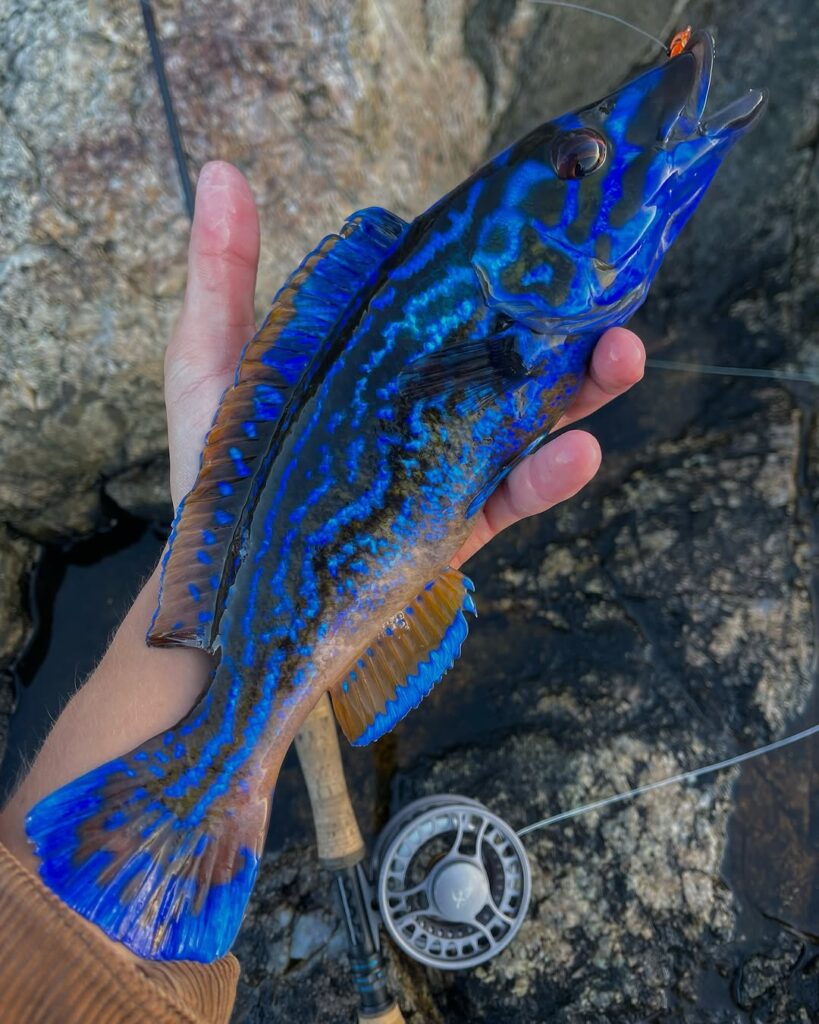Saltwater fly fishing in Norway, with local guide Frej
FISHMAG reached out to Frej @frejonthefly – a saltwater fly fishing guide based in Kristiansand, a city on the south coast of Norway. As a fly fishing guide, he has spent thousands of hours introducing anglers from the UK and other countries to the joys of targeting familiar species – cod, mackerel, pollack – only Norway size… The waters up there are nutrient-rich, and compared to a lot of fly fishing locations, relatively untapped by anglers. Here is our interview with Frej, entirely in his own words. You can book a trip with Frej via Learn the Land fly fishing guides here.
The most striking thing most people comment on when they take the trip down to Norway is how beautiful the landscape is; the mountains, the green nature, all the little islands scattered throughout the coastline. Truly serene take in while pulling hard on a pollock!
The diverse terrain, with plenty of ups and downs, has countless new fishing spots to discover. Another major thrill for me is the biodiversity in nearly all the areas I fish. You never really know what’s on the line until you reel it in.
There’s pollack and cod in Kristiansand that you can catch these from the shore up to around 10 pounds, and a massive abundance from 1-5 pounds. The day is spent catching, not just casting…
There’s also the sporadic opportunities to sight cast to schools of fickle sea trout from the rocks, which can definitely elevate your heart rate. Coastal fly fishing in Kristiansand is a painfully overlooked gem, and we want to share this with the right people.
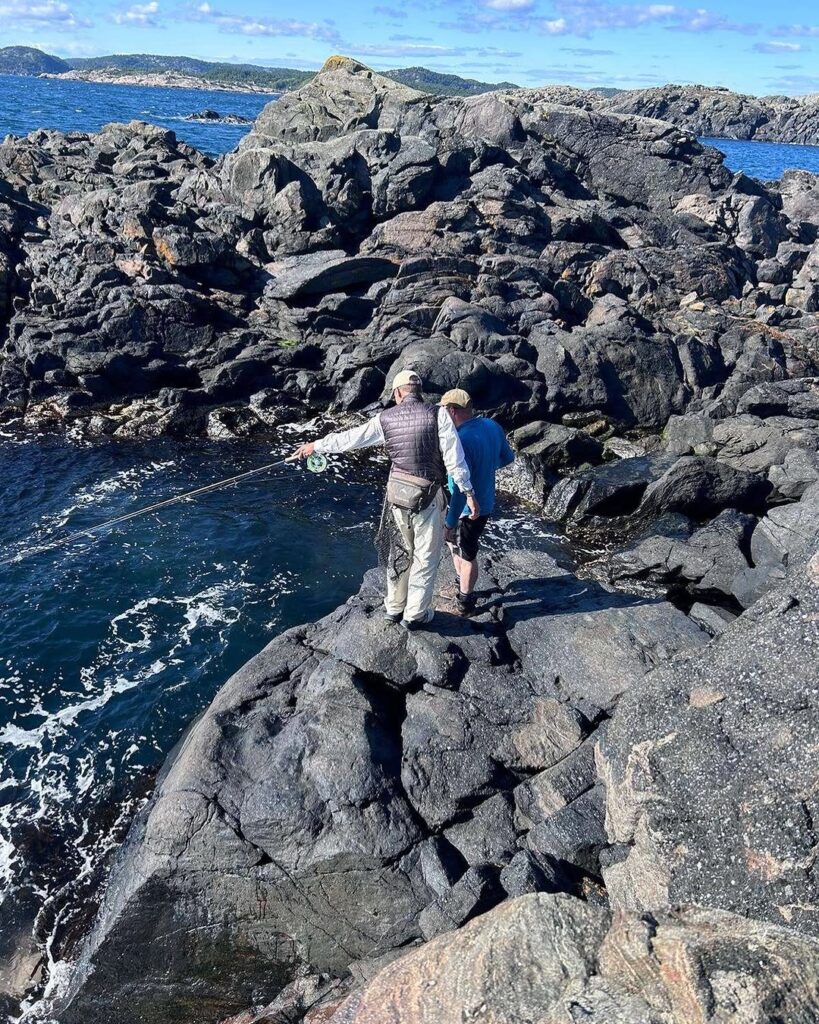
However, the most challenging aspect of fishing on the coastline is also the terrain. At times, you’re casting from several meters above the waterline, trying to place your line right alongside the rocks. And if you hook a big one, there’s a chance you might end up in the water with it!
Another classic issue fishing on the coastline is getting your fly line down to where the fish are. Since we are targeting several species at once, the depth needed varies from top water all the way down to 10-15 meters. This depends on the specific spot as well as water temperature, but you do need a truly versatile flyline. What I arrived at was using fast sinking sink tips attached to shooting line. Due to how heavy the shooting tips are combined with how slim the shooting line is, you’re also getting great wind cutting power when the weather’s sub-optimal.
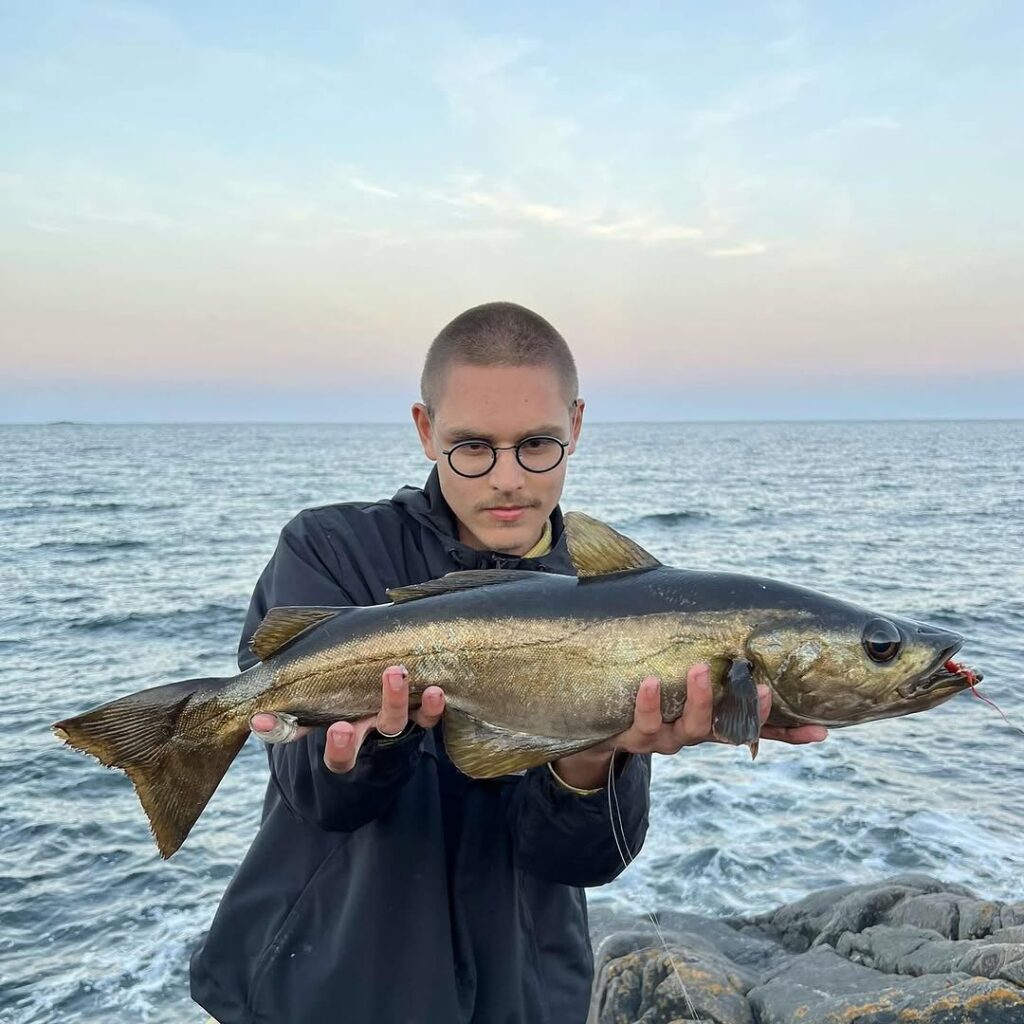
Norwegian Pollack on the fly: the rods, the leaders, the flies
My preferred setup for pollock fishing would be:
- A heavier rod, from 7wt and up. Sometimes I also use a 12 if I know the fish are big in a particular area.
Pollock can be found in almost all types of water, but they tend to prefer spots with good coverage. Thus, when you’ve hooked a bigger one in a place with lots of seaweed and jagged rocks to get snagged on, you want to be able to really put pressure on the fish. - To complement this I run a thicker tippet with a 16 pound test.
This is not so much for the sake of the fish, but in case your line ends up rubbing on the rocks. - I also always run a double fly set up, about 1.5 metres apart in order to increase my chances.
Pollock are almost always in schools, and if a smaller one gets hooked on your main fly, there’s a big chance that a larger one will get enticed and come up for that second fly I’ve got on. - Big, colourful flies and some flea flies
When choosing flies for pollock, they generally prefer big, colourful ones. However, don’t hesitate to try flea flies when the mood strikes—you might be surprised by the results! Some of the biggest pollock I’ve caught have been on the gammarus pattern.
Cod on the fly: worth the challenge
Cod are relatively common in the shallower waters around Kristiansand, but the challenge is getting them to bite.
They find a slightly weighted fly jigging off the bottom irresistible, but with seaweed and other underwater obstacles, fly fishing for cod often means losing a few flies along the way.
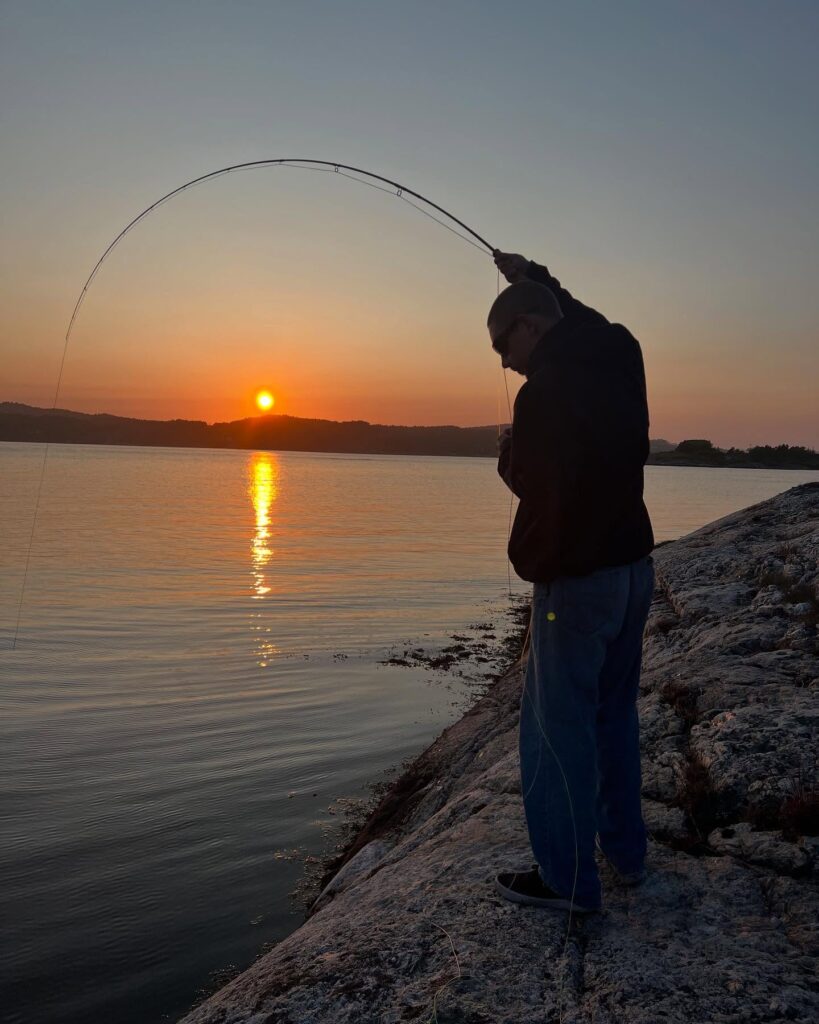
The frustration is absolutely worth it though, as cod put up some of the best fights you can come across here in Norway. Loads of head shakes continuing for minutes sometimes without letting up. Truly feels like you’ve hooked into a log regardless of how big it ends up being when you finally pull it out the water.
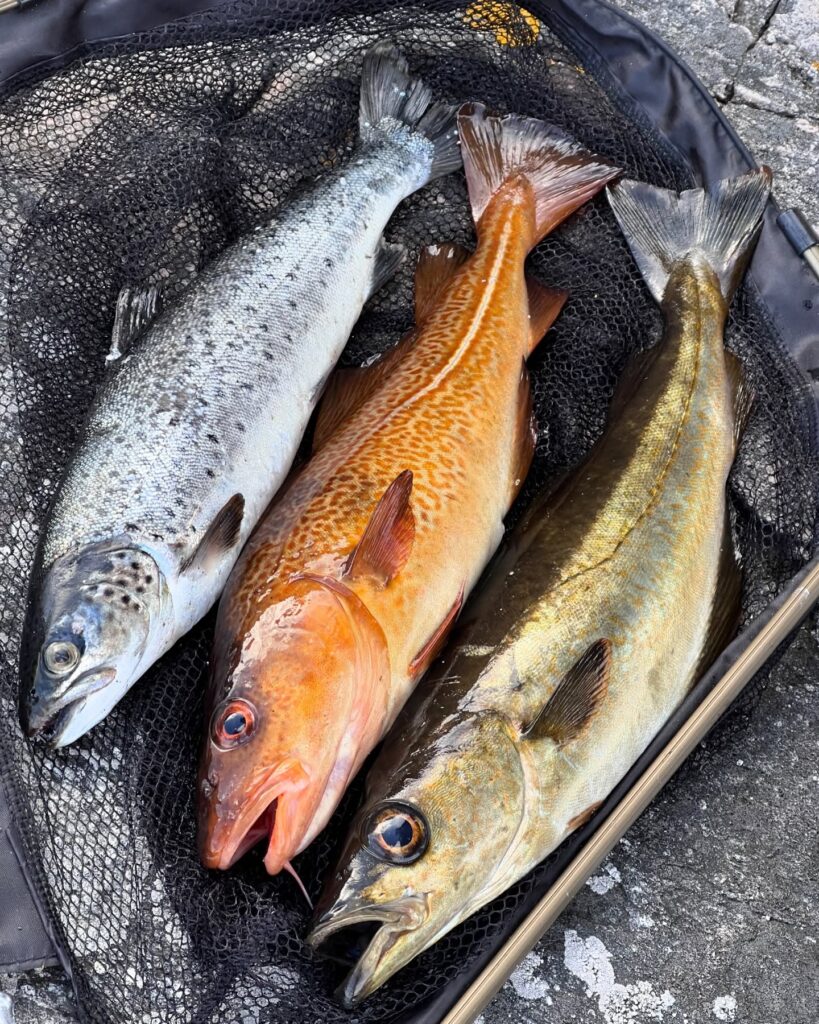
Mackerel: The Seasonal Speedsters
Mackerel, on the other hand, are highly seasonal and can be tough to track down. Sometimes they’re everywhere, and other times, I won’t see a single one for weeks. But when you do find a school, the fight is always top-tier. They’re incredibly fast and punch well above their weight, going at it just like their larger cousins, the tuna. They never give up. It’s especially thrilling when they’re hitting topwater, attacking anything that moves. In those moments, you could throw a rock, and they’d be racing to get to it first.
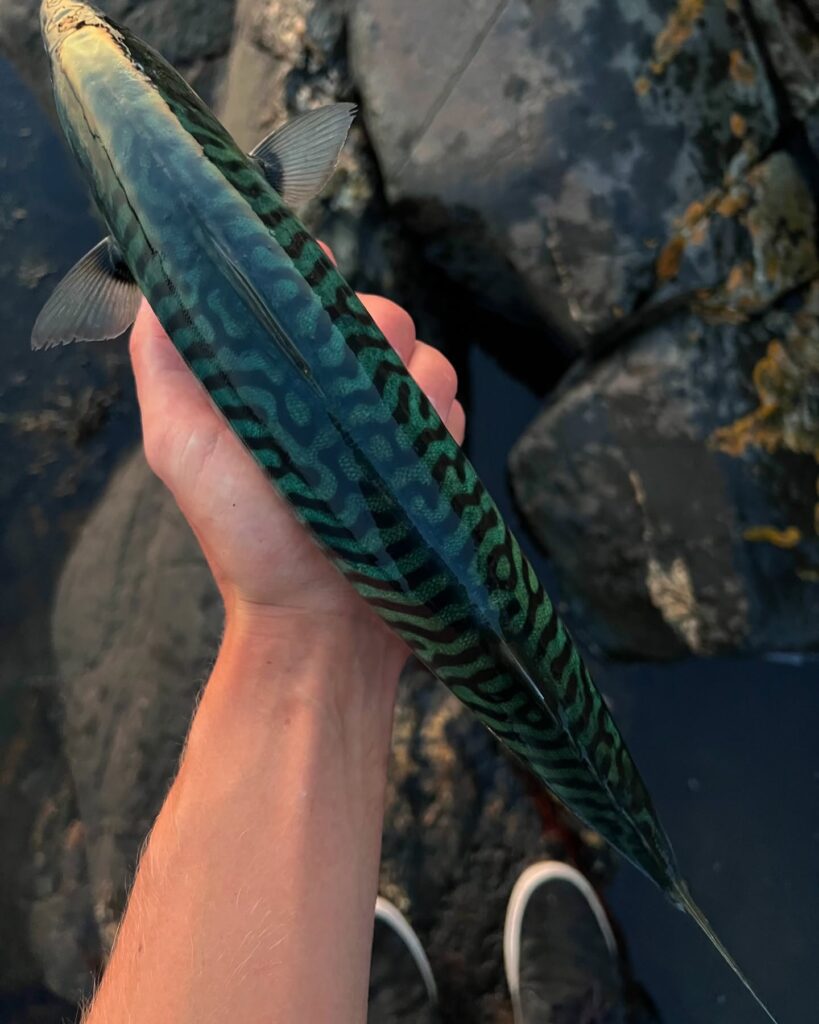
Common Mistakes: The Importance of Hook Setting
One of the most common mistakes I see from clients is improper hook setting.
Most come from a freshwater background, where light tippet and small hooks are the norm, but simply raising the rod or flicking the wrist isn’t enough here. These fish are tough, with thick skin, so to get a solid hookset, you need to strip-set and use your entire arm.
This is especially crucial with bigger pollock—many anglers feel a strike, fight the fish for a few seconds, and then lose it because they didn’t strip-set properly. It can be a tricky skill to learn, especially since hook setting becomes ingrained in muscle memory, but it is absolutely essential for success.
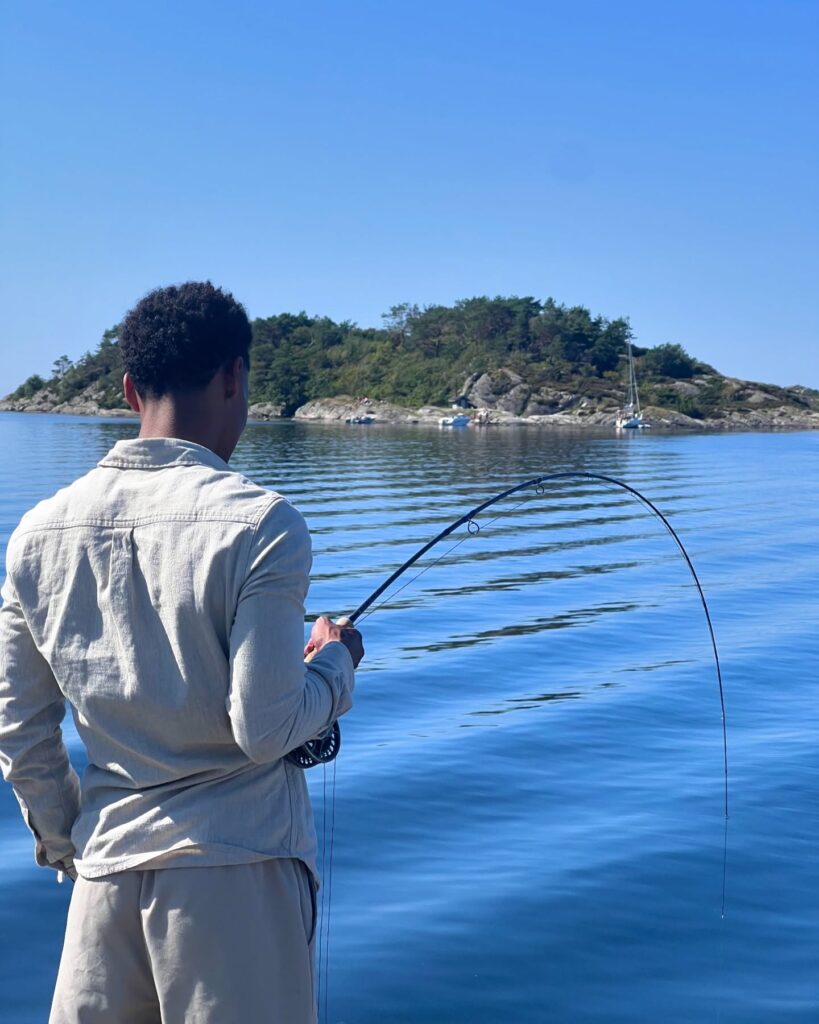
Final Advice for Saltwater Beginners
My advice for those wanting to make the switch over to salt water from freshwater would be to just go out and try it. I’ve fished with all types of setups and been at least somewhat successful with all of them. As long as you’re able to locate where the fish are and you understand what type of retrieve you should be doing depending on water temperature and time of day, you will be reeling in fish like there’s no tomorrow. Plenty of people are sceptical about fly fishing in the ocean, but I can assure you it’s incredibly effective, and more often than not, more effective than regular spin fishing when throwing from land.
Get out and there and enjoy the nature!
Yours truly, Frej
FISHMAG also reached out to British fly angler Elijah Wait, also on the team at Learn the Land, who has had diverse and interesting catches on the SW Fly back in the UK. He’s also fished in Norway with Frej. Here’s what he had to say about the experience:
“The fishing out in Norway is pretty similar to the fishing here in the UK in terms of what species are present and how we target them… however the numbers and size of fish are a class above what we find in the UK.”
“Predominantly, we fish sinking lines on 7wt rods with fairly small flies. The main fish we target are pollack, cod, coalfish, mackerel, and sea trout, but the various wrasse species show up regularly as well. The cod and pollack average a couple of pounds just off the rocks and they fight very well, with fish of up to 5kg being possible from the shore. There are also opportunities to sight fish sea trout in deep water, as they cruise along the surface in the summer sunshine. Our team out there at Learn the Land are excellent, and they know the water very well.”
“If specifically targeting the wrasse with weighted flies, you can have some truly excellent sport. The sheer numbers of fish you find even in shallow water is mind blowing, sometimes you’ll have 4 or 5 wrasse chasing your fly as you retrieve. There many other species out there that will happily take a fly as well, such as poor cod, whiting, greater weevers, flounder, turbot, plaice, sea scorpions, a few species of gobies, just to name a few. It‘s absolutely my kind of fishing, fast action and plenty of fish on light tackle.”
